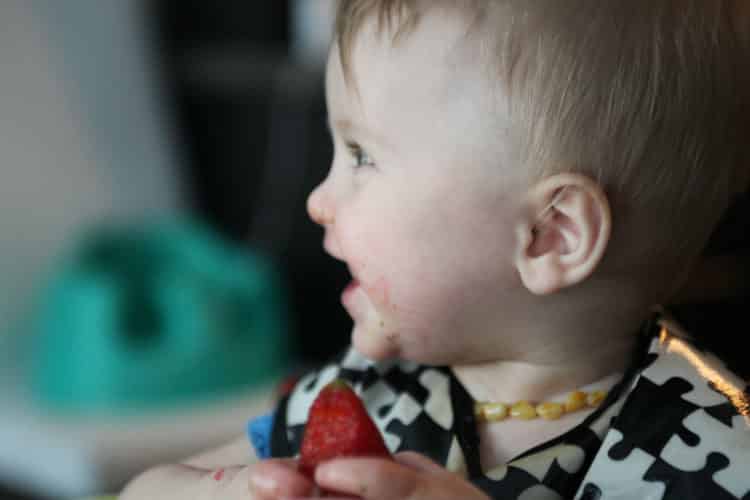Make sure that you have read the first part of this entry, What does baby-led weaning, or BLW, mean?
The reasons stated by parents to start baby-led weaning vary enormously and can be strange at times:
- they can explore a range of colours and textures;
- allows them to smell the food before eating it;
- develops motor skills and coordination for their physical development (rapid progression of fine motor skills);
- can help self-confidence (positive attitude towards discovering foods);
- can contribute to the development of chewing muscles and help digestion;
- gives them a feeling of independence;
- family organisation for easier meals (everyone eats the same thing);
- can diminish the costs of foods specific to the baby;
- can reduce obesity (pace dictated by the child, respecting satiety);
- being less averse to different textures;
- can help the development of the child’s autonomy.
To use baby led weaning with pieces of food, you have to note the physical signs that the baby is ready (see the entry on Baby’s Diet).
BLW only starts after six months, and the baby must be able to remain seated in their chair during family meals without help. The baby must be born at term and in good health with good full development. The baby must also be able to turn their head from left to right and up and down, and finally, they are able to bring food to their mouth. Parents can then give them pieces of food from each food group to ensure that they eat a bit of everything and meet their nutritional needs. The child must be able to pick up the food and bring it to their mouth.
Research Results About BLW
The few studies that have been done on the topic leave much room for interpretation and the unknown. These were done on small cohorts of babies and didn’t provide clear information on when to start this approach, the real benefits, safe BLW techniques and the potential inconveniences of this diet.
Based on completed studies, in families that use BLW, it seems the parents are often highly educated, and the mother breastfeeds their baby longer too. A severe lack of information and research in the scientific literature about the topic remains today. Generally, we can’t advise this diet, lacking the fine details about prevention associated with this approach.
To continue reading, go to The Risks of Baby Led Weaning.
Pour lire la suite, consultez le billet Les risques à l’alimentation autonome du nourrisson.


